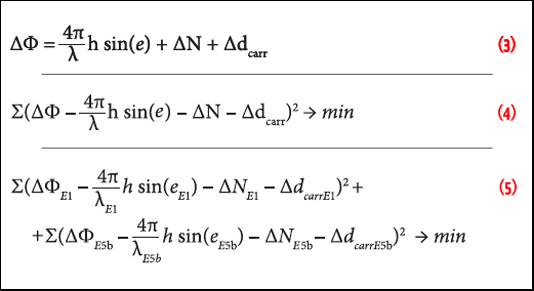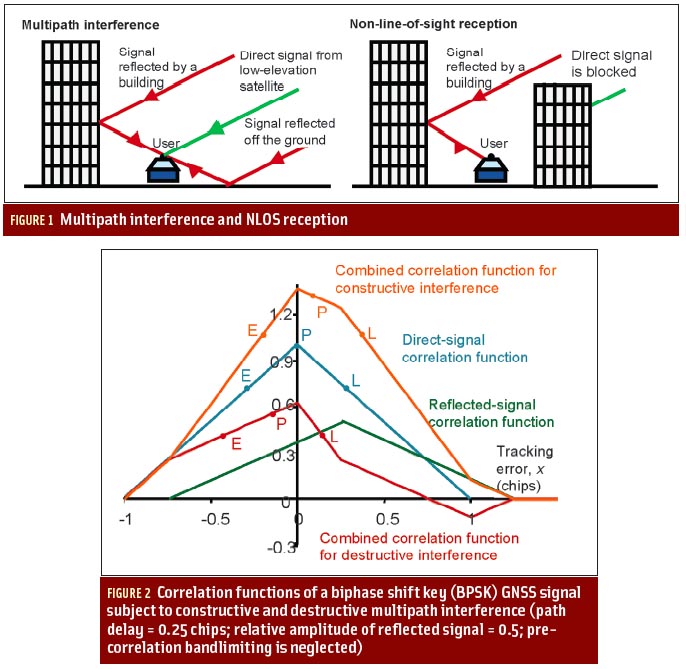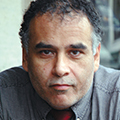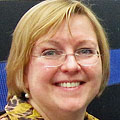 Equations 3, 4 & 5
Equations 3, 4 & 5Working Papers explore the technical and scientific themes that underpin GNSS programs and applications. This regular column is coordinated by Prof. Dr.-Ing. Günter Hein, head of Europe’s Galileo Operations and Evolution.
By Inside GNSS FIGURE 1: Proposal to have a single chip GNSS receiver with additional pins to allow for the inclusion of an additional radio
FIGURE 1: Proposal to have a single chip GNSS receiver with additional pins to allow for the inclusion of an additional radioQ: What will limit the spread of multi-frequency GNSS receivers into the mass market?
A: To set the scene, we need to define our terms of reference. By multi-frequency we mean receivers that operate with navigation signals in more than just the standard upper L-band from about 1560–1610 MHz where we find GPS L1, Galileo E1, Compass B1, and GLONASS L1. The obvious additional frequency is the lower L-band, from about 1170 to 1300 MHz, where again the same four constellations have signals.
By Inside GNSSThe whole GNSS world should have a warm spot in its heart for centripetal forces.
After all, a centripetal force — in this case, gravity — is what keeps planets in rotation around our Sun and satellites, around the Earth.
Centrifugal force, of course, is what throws us off a merry-go-round or carousel. Centripetal force is what keeps us on board.
For those on a merry-go-round, the centripetal force is not gravity, but rather the tensile strength of our arms pulling us toward the center of rotation, at right angles to the motion of our seats.
By Inside GNSS Peter Gutierrez
Peter GutierrezGalileo promoters have always tended to try to link the program to new jobs and economic growth, arguing that once Europe’s global satnav system is up and running, new services will be possible and opportunities for EU companies will abound.
Such arguments needed to be made, to bolster the chronically tenuous political support Galileo has garnered from the European Union (EU) powers-that-be and the chronic lack of faith among just about everybody in Europe’s ability to actually make the system fly.
By Peter Gutierrez
Navigation users may benefit from GPS modernization sooner than expected thanks to an apparent shift in the schedule of the modernized GPS ground control segment still under development.
The change means that full operational implementation of the new signals will come earlier in the delayed modernization of the operational control Segment (OCS).
By Dee Ann Divis